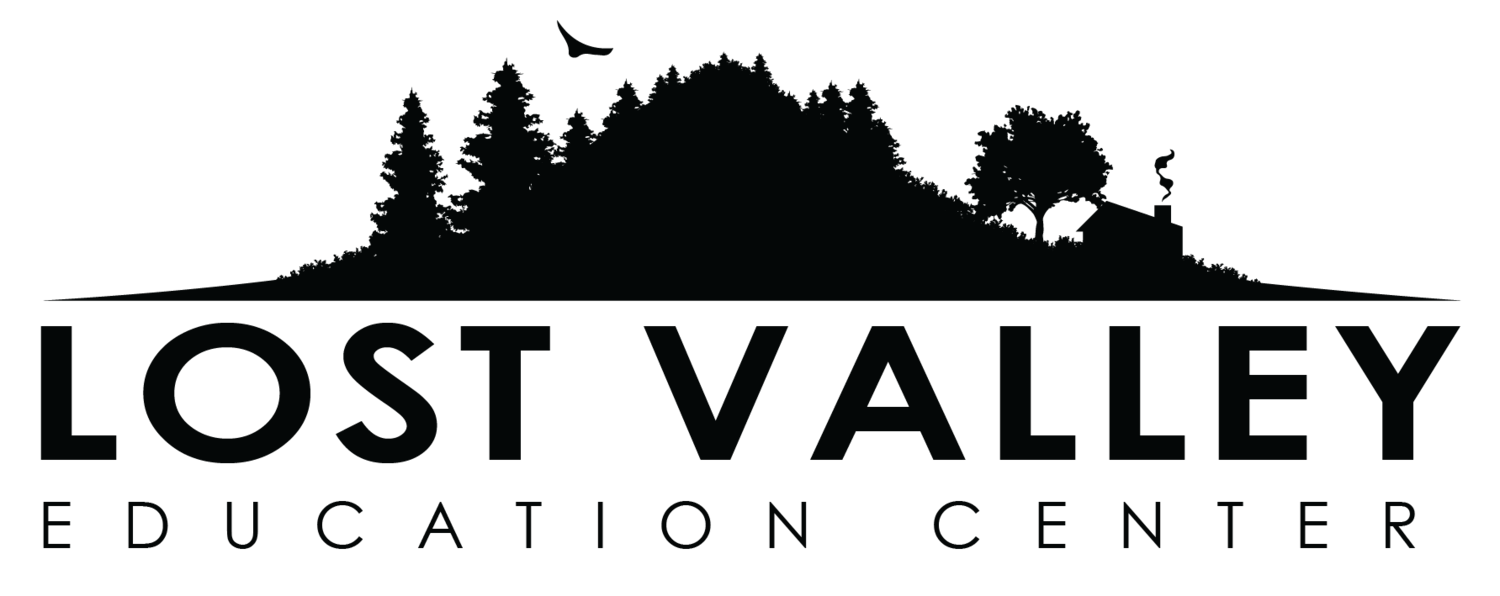Resident Staff & Student Programs
There are 4 primary “Resident Programs.” They reveal the basic components of community development: eating/cooking together, community service and land resource management.
Lodge Dining Program
In our vegetarian kitchen, we cook primarily organic and local foods, with many vegetables and fruits coming straight from our gardens during the abundant times of the year. Prepared meals are served at lunch and dinner, Monday through Friday. On the meal plan, you can eat buffet-style and enjoy the opportunity to connect with your community. It’s simple. You pay Lost Valley in advance of the month, we purchase the bulk foods as a community, you show up at meal time and it’s all you can eat!
Eating meat or having a special diet is not a problem, however. The nearby Guest House has refrigerators, shelves, and kitchen space available for residents to cook their personal foods.
Community Cooking Program
If you participate in the Cooking Program, you reap the rewards of kitchen service while receiving a discount on meal plans in the Lodge Dining Program. Working in a large commercial kitchen stocked with an abundant variety of organic foods is a treat. Cooks are often working with others to learn and share space with while creating healthy meals for a hungry and appreciative community. Community cooks do just one 2.5 or 5 hour shift per week, and simply show up to eat for other meals throughout the week. Participating in this program is fun, educational, creative and saves money!
HIVE Program
HIVE stands for Habitat Improvement Voluntary Education. It’s about the collective care of our community and environment through providing service while earning credit for your efforts! Residents may, if they wish, seek a HIVE role assignment and earn a small amount of credit (reducing cost of living here) for providing that service. The program is educational as it teaches us about how to care for each other and our spaces. Some folks have multiple roles out of communal necessity, while others have none out of personal preference. The HIVE Program is how we get our shared bathrooms cleaned, governance positions fulfilled, trash to the dump, trails maintained, meetings facilitated, sauna lit, firewood stocked, mail distributed, chicken eggs washed, lawn mowed, you name it. We encourage everyone to get in on the action here and most gladly do, though positions may be limited.
Garden Program
Lost Valley has about two acres of land dedicated to vegetable gardens, as well as fruit trees, forest gardens, agro-forestry systems, chickens and ducks. Presently the community is transitioning to a model of community-wide support of these important land-based resources. All resident staff and students participate in the collective care of our onsite food resources by contributing four hours of work per month to the Garden Program. The work is collaborative and organized through work-parties that occur twice each week with the stewardship of our Garden Manager. Each resident participates in two of these work-parties per month, so scheduling is flexible, to ensure those who live here are able to pitch in while maintaining balance with other demands on their time and energy. With this, we are able to produce, store and preserve our own food for increased resilience, education and teamwork – and move collectively toward more sustainable life-ways.
General:
Most residents aren’t huge fans of mandates. Attending community governance meetings, doing kitchen duty or taking on a chore in the HIVE program are optional ways of integrating and contributing. There are others ways beyond these for folks to be involved. We do, however, require all new residents to the community to participate in at least the half meal plan for the first three months in residence. This is the primary way that most residents in the community come together on a consistent basis. Thus, the meal plan is an ideal way to ensure that new residents integrate and provides us a solid chance to get to know newcomers.
We co-create an ever-evolving community and learn in the process. Through service, we are given the opportunity to grow – to re-train our individualistic minds to think how others are operating within systems. We thereby have insight for the ways that we depend upon one another and what each person’s “best” looks like as we all try our best to accomplish the things we sign up to do.
As we resolve to hold our individual responsibilities in the context of the whole, we can begin to see the threads that weave us all together. The tapestry created is community, family, tribe. It is our birthright, our home.
While the programs are designed to get necessary tasks accomplished, and are therefore structured and defined, we are encouraged to see our assigned roles as an opportunity for a creative and personalized response. We are encouraged to be flexible, humble, and given to the spirit of service. If we can muster the care for our little piece of the puzzle, we may begin to see every corner of our space lit up with the unique offerings of each individual.
In these ways, resident programs are offered as a practice, a discipline. They keep us honest to our intentions for coming to community. And if we commit ourselves to them in a sincere way, we open ourselves more and more to that experience of connection and belonging that nourishes us. Then, whether we are best friends or passing acquaintances, it matters less, because we know in each moment we are co-creating our lives together in this community.
This is the heart of these programs, why they may even be called such. This is why we encourage everyone to participate, but allow everyone to choose how extensively and in what ways they are involved.

